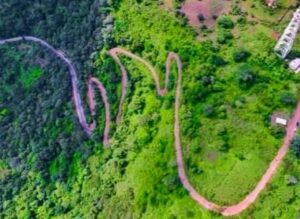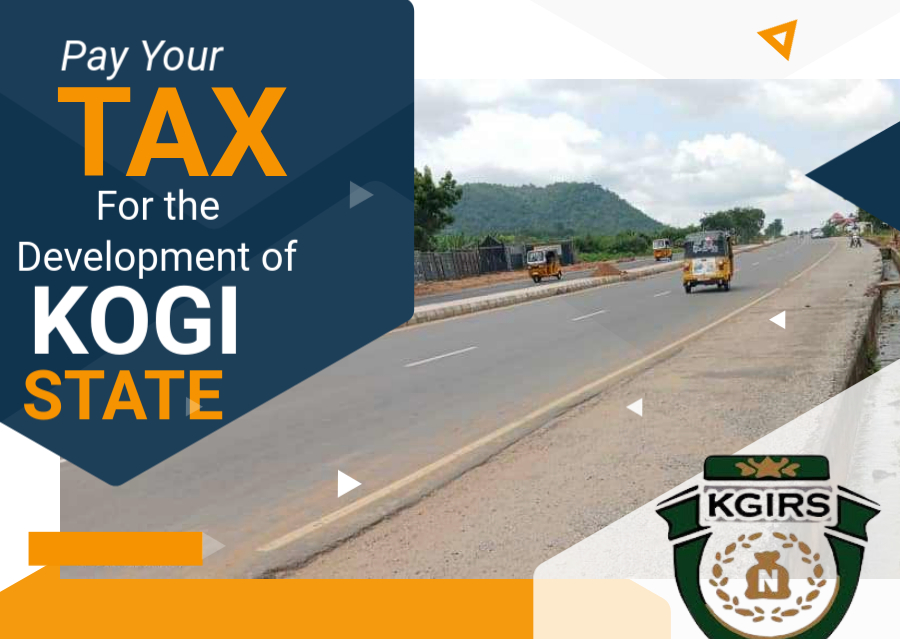

By Dada Ahmed in Lokoja.

Wreckage of the vehicle.
(C) Google.

An overview of Mounti Patti.
(C) Facebook.
In the early hours of last Tuesday, a monumental tragedy nearly struck again on the steep, winding road leading to Mount Patti in Lokoja. A vehicle belonging to the Kogi State Broadcasting Corporation (Radio Kogi) plunged into a ditch while descending the hill.
Sources said the driver, who had taken a team of engineers up for the morning transmission, reportedly suffered a brake failure. Though he survived with injuries, the incident reignited public concern over the deplorable state of the Mount Patti road, a route that has become a hazard to life and a perhaps,stumbling block to Kogi’s tourism and development aspirations.
Rising about 1,500 feet above sea level, Mounti Patti is one of Kogi State’s most treasured landmarks, a place where history, communication, and culture converge. Historical accounts link the hill to Flora Shaw, the British journalist who coined the name “Nigeria,” during her stay in Lokoja, the former capital of Northern Nigeria.The mountain also used to house the resting residence of the first Governor General of Nigeria,Lord Fredrick Lugard.
Today, Mount Patti is home to the transmitters of Radio Kogi, NTA Lokoja, and some other telecommunications masts that keep the state connected. It also draws tourists, and fitness and sports enthusiasts who climb the hill to experience the breathtaking view of the confluence where Rivers Niger and Benue meet and flow as one into larger rivers of the world.
Yet, behind this beauty lies danger. The road to Mounti Patti has become rough, narrow, and unsafe, a challenge for especially motorists. The recent accident was not the first. Over fifteen years ago, about ten secondary school students lost their lives when their excursion bus suffered brake failure and plunged into a ditch on the same hill.
While the latest auto crash on the mountain may not have been directly caused by its bad road, keen observers, workers in the area, and other regular users have emphasized the urgent need to fix it.
For many who use the road daily, every trip is an act of faith. A technician, John Asuquo,
who services installations atop the hill described how he prays for safety before each ascent, knowing that one sharp bend or a failed brake could spell disaster.
He also advised drivers to make sure that their vehicles are proper mechanical condition before plying the road.
Residents and workers around the area believe that fixing the Mount Patti road is no longer optional, it is a matter of life and progress. To them, rehabilitation is not just about filling potholes but about saving lives, improving access, and creating opportunities for tourism and local enterprise.
Mount Patti remains one of Kogi’s most stunning natural treasures. A properly rehabilitated road would encourage more visitors to explore its scenic beauty, relax in its serene atmosphere, and patronize local traders. This would boost small businesses and further project Lokoja as a growing tourism destination in Nigeria.
The benefits would also extend to establishments whose structures are located atop the hill. With smoother access, maintenance staff of media and telecommunications outfits would work more efficiently and safely, ensuring uninterrupted broadcasting and network services across the state and beyond.
Indeed, Mount Patti is more than just a mountain, it is a potential tourism goldmine. Its summit, therefore,offers an uninterrupted panoramic view of Lokoja and the meeting point of Africa’s two great rivers. With better infrastructure, it could become a hub for guided tours, cultural festivals, eco-tourism, and mountain sports, creating jobs and revenue for the state.
Experts in civil engineering agree that reconstructing the Mount Patti road with proper drainage, guardrails, signage, and lighting would drastically reduce accidents and further reinforce the government’s commitment to safety and infrastructure.
Moreso,rehabilitating the Mount Patti road, means more than constructing a route as it symbolizes a bridge between safety, tourism, and sustainable development and shows that the state values the lives of its workers, its history, and its future.
For any visitor or resident gazing up at the hill, Mount Patti represents the pride of Lokoja, Kogi, and indeed Nigeria. Fixing the road will not only prevent further loss of lives but also make the mountain a place everyone desires to visit,to catch that beautiful glimpse of Lokoja and its alluring surroundings from the top.
As the sun sets over the confluence city each evening, Mount Patti stands tall, watching over Lokoja like a timeless guardian. Its call is clear: progress begins with action,and fixing its road today is an investment in safety, tourism, and the enduring future of Kogi State.
Ahmed is the publisher of The Reporters.

